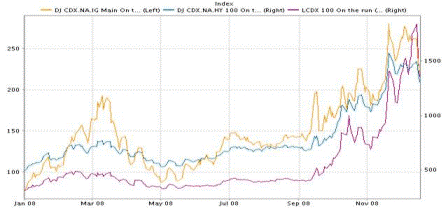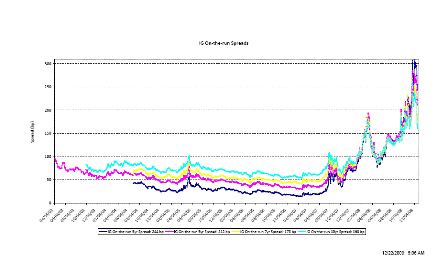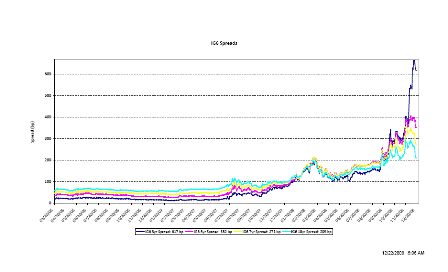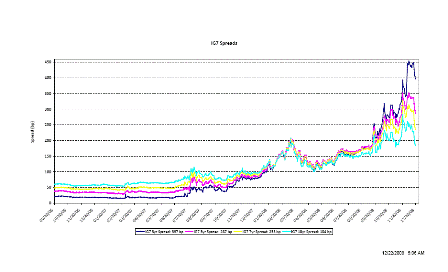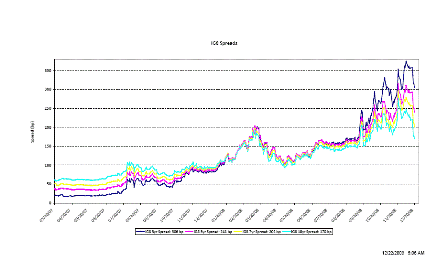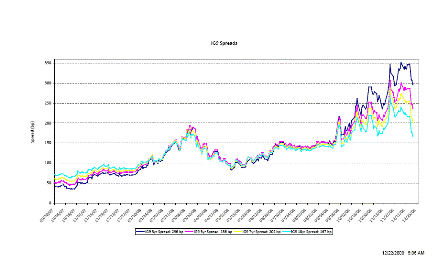[Skip to the end]
(email exchange)
In actual fact they’ve never had it to lose.
>
> On Mon, Dec 22, 2008 at 11:02 AM, Russell wrote:
>
My, how times have changed.
A year ago, few policymakers, “strategists,” or economists, here or elsewhere, saw an economic downturn coming (even though the National Bureau of Economic Research now says that a U.S. recession actually began in December 2007).
Now, as the following Agence France-Presse report, “World Faces Total Financial Meltdown: Spain’s Bank Chief,” reveals, we have central bankers who sound like doom-and-gloomers (gearing up to write their own books, perhaps?).
The governor of the Bank of Spain on Sunday issued a bleak assessment of the economic crisis, warning that the world faces a “total” financial meltdown unseen since the Great Depression.
“The lack of confidence is total,” Miguel Angel Fernandez Ordonez said in an interview with Spain’s El Pais daily.
“The inter-bank (lending) market is not functioning and this is generating vicious cycles: consumers are not consuming, businessmen are not taking on workers, investors are not investing and the banks are not lending.
“There is an almost total paralysis from which no-one is escaping,” he said, adding that any recovery – pencilled in by optimists for the end of 2009 and the start of 2010 – could be delayed if confidence is not restored.
No, if the appropriate fiscal balance is not restored-
Might I suggest an immediate payroll tax holiday?
Immediate revenue sharing?
Offering a federally funded job to anyone willing and able to work?
Doesn’t get any simpler than that?
Where’s the ‘complex’ problem?
Yes, they are too far out of paradigm to or they never would have let it all go this far, and being willing to wait yet another month for a fiscal response.
Sadly, another case of innocent fraud.
Ordonez recognised that falling oil prices and lower taxes could kick-start a faster-than-anticipated recovery, but warned that a deepening cycle of falling consumer demand, rising unemployment and an ongoing lending squeeze cannot be ruled out.
“This is the worst financial crisis since the Great Depression” of 1929, he added.
Ordonez said the European Central Bank, of which he is a governing council member, will cut interest rates in January if inflation expectations go much below two per cent.
“If, among other variables, we observe that inflation expectations go much below two per cent, it’s logical that we will lower rates.”
As if any of that matters.
Regarding the dire situation in the United States, Ordonez said he backs the decision by the US Federal Reserve to cut interest rates almost to zero in the face of profound deflation fears.
The blind leading the blind.
Central banks are seeking to jumpstart movements on crucial interbank money markets that froze after the US market for high-risk, or subprime, mortgages collapsed in mid 2007, and locked tighter after the US investment bank Lehman Brothers declared bankruptcy in mid-September.
Interbank markets are a key link in the chain which provides credit to businesses and households.
The central bankers and mainstream economists in general are the ‘missing links’, anthropologically speaking.
[top]

